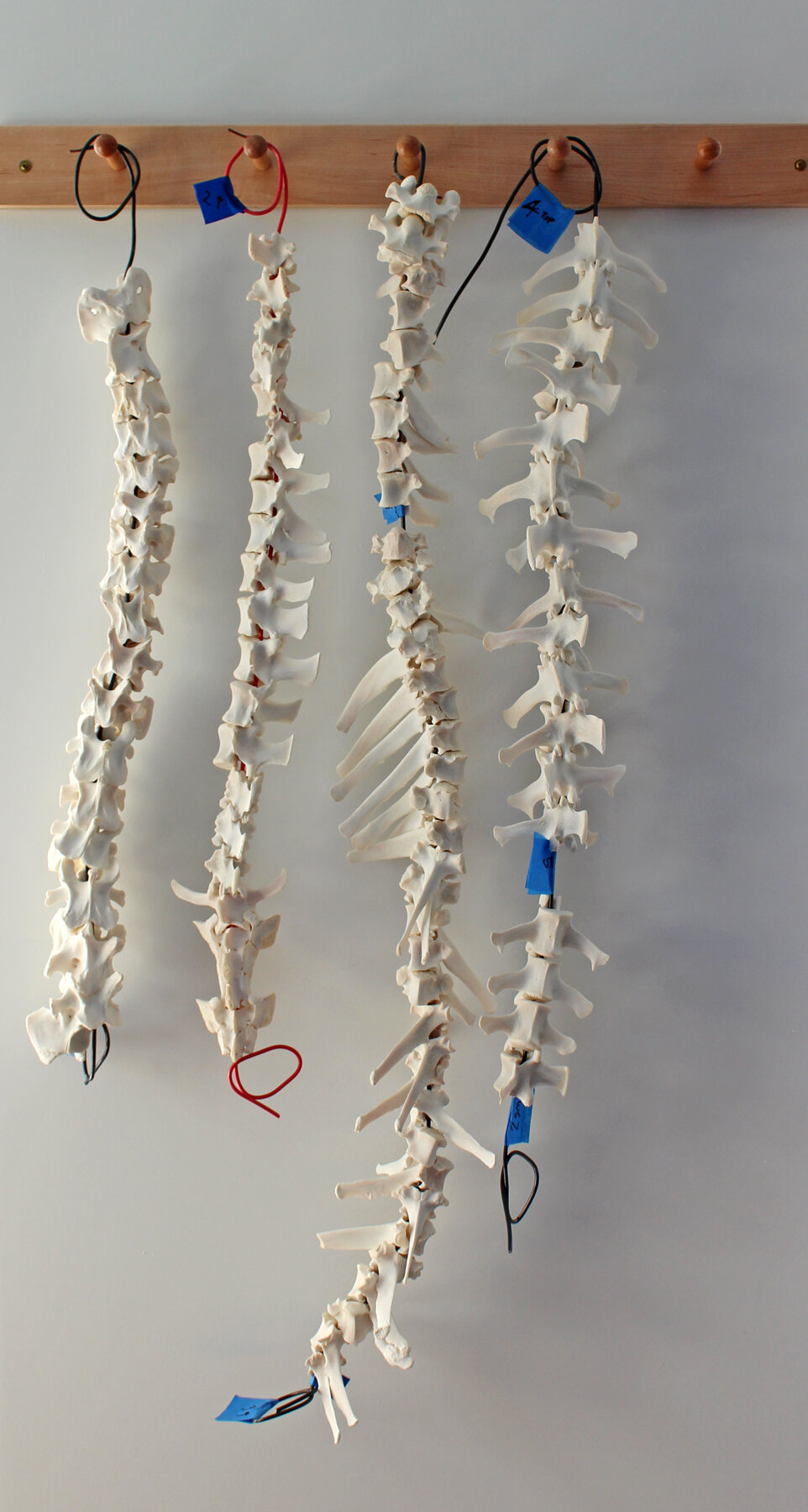January In The Annex: Justin Life, Miller Opie and Dennis Stein
This January in the Annex we are featuring Annex Artists Justin Life, Miller Opie and Dennis Stein. The exhibition runs through Sunday, January 31st with a virtual artists talk at 3PM. Please RSVP here to receive an event link. Below the artists talk a bit about their ideas and process.
Justin Life
Baroque religious painting was of one the formative art movements that inspired me to become an artist. I wanted to create artwork that had the same impact and presence I felt when first looking at artists like Peter Paul Rubens and Tintoretto. In my recent artwork I have been exploring the possibilities as a non believer of transforming and personalizing the Christian iconography of the Last Supper and the Last Judgment.
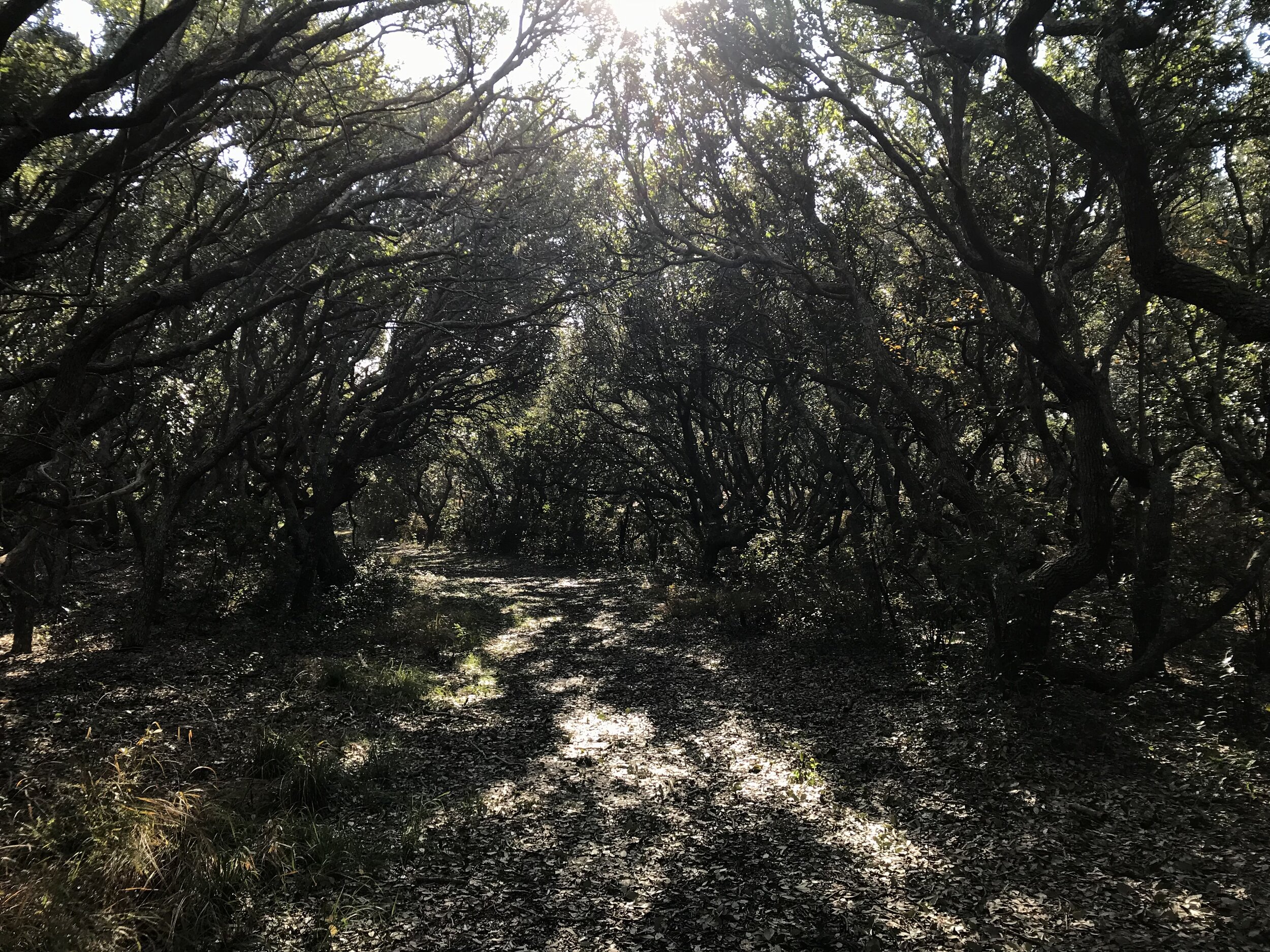
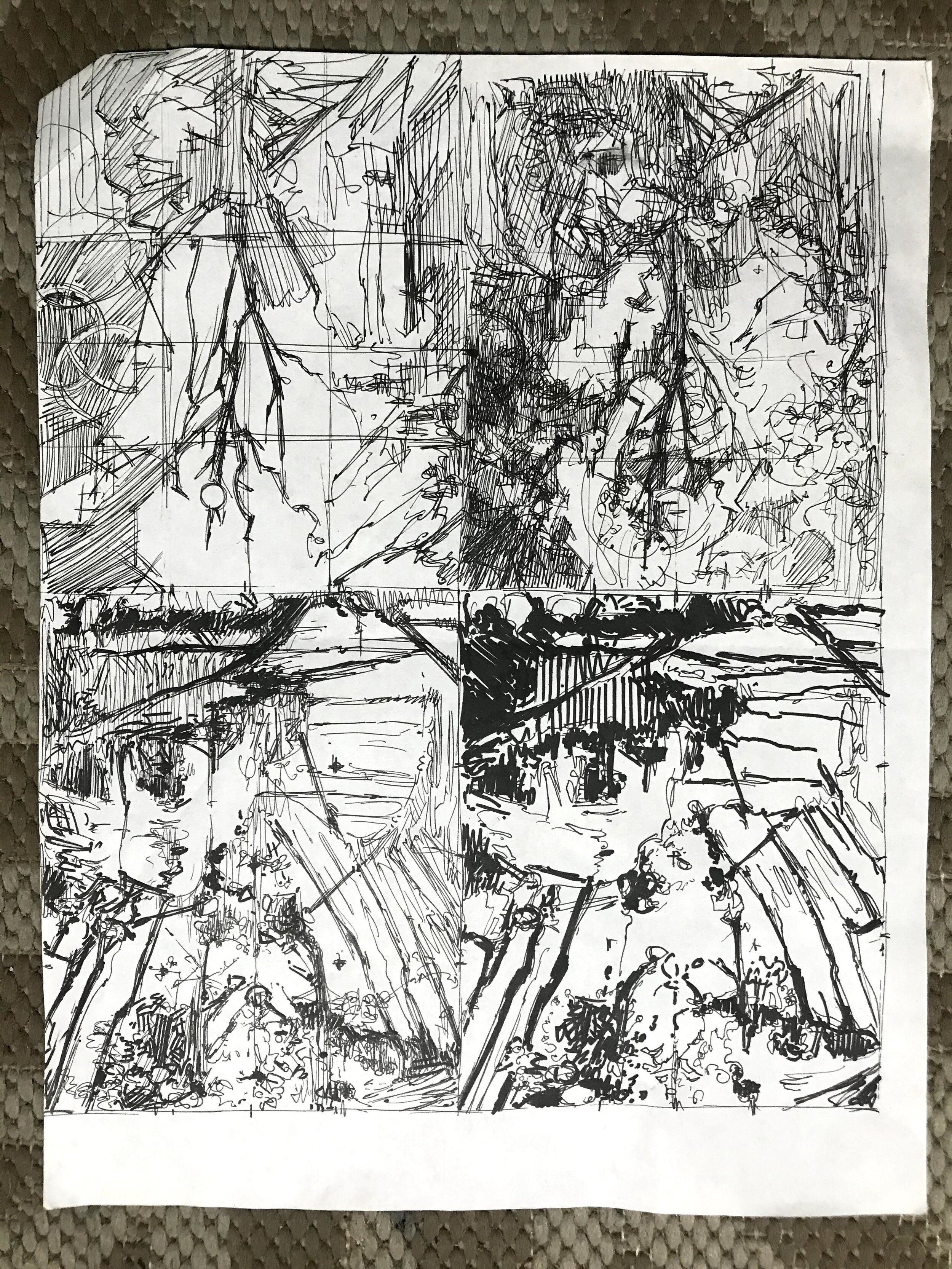
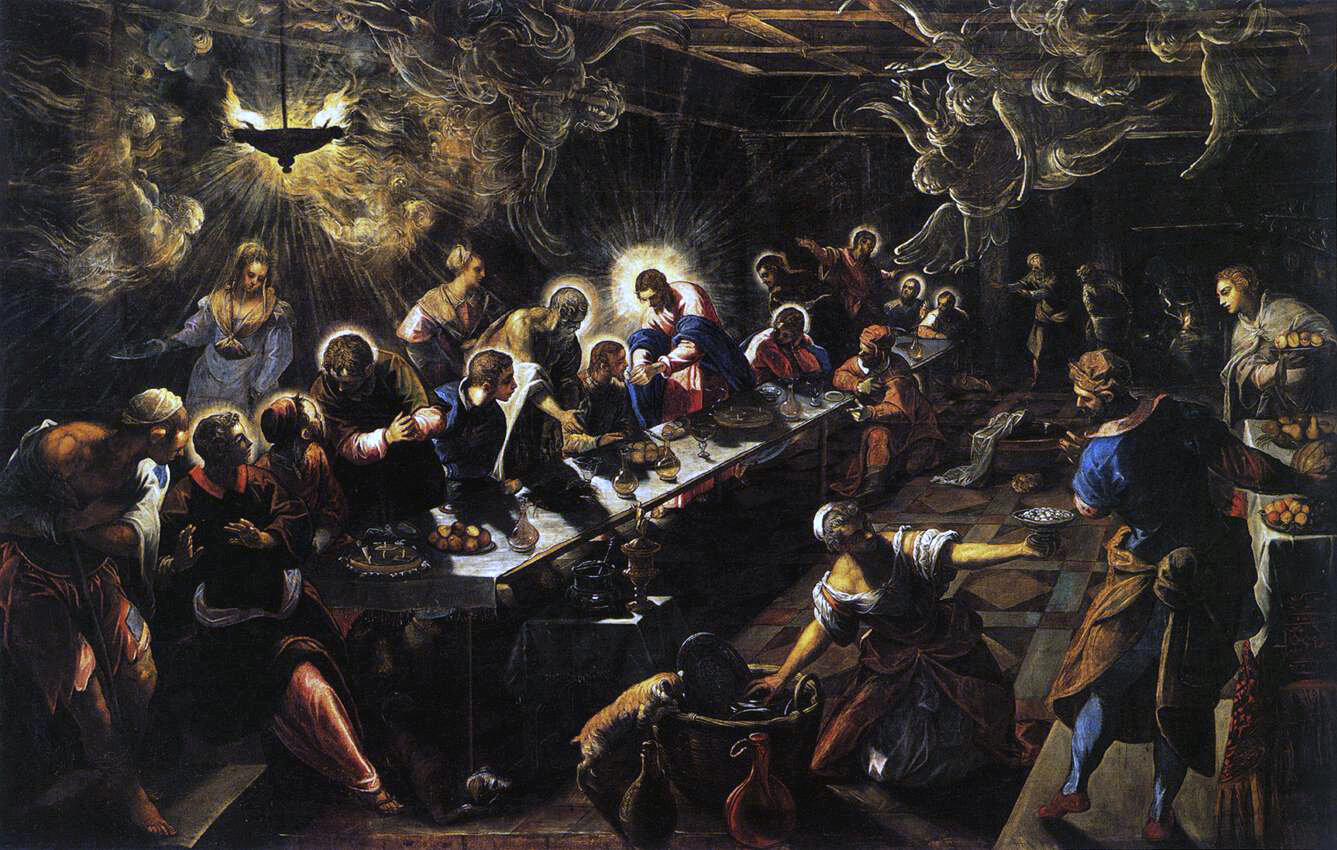
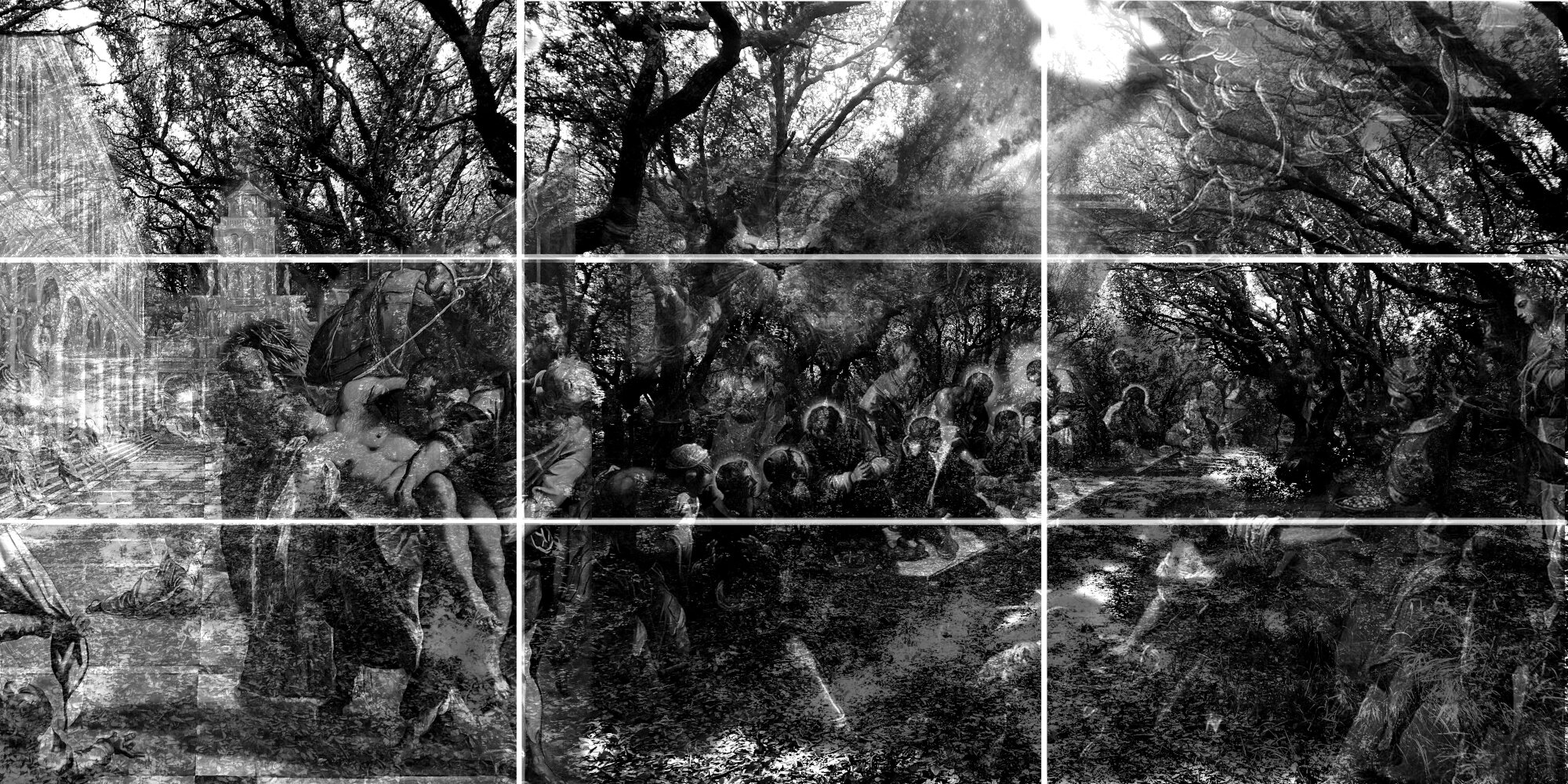
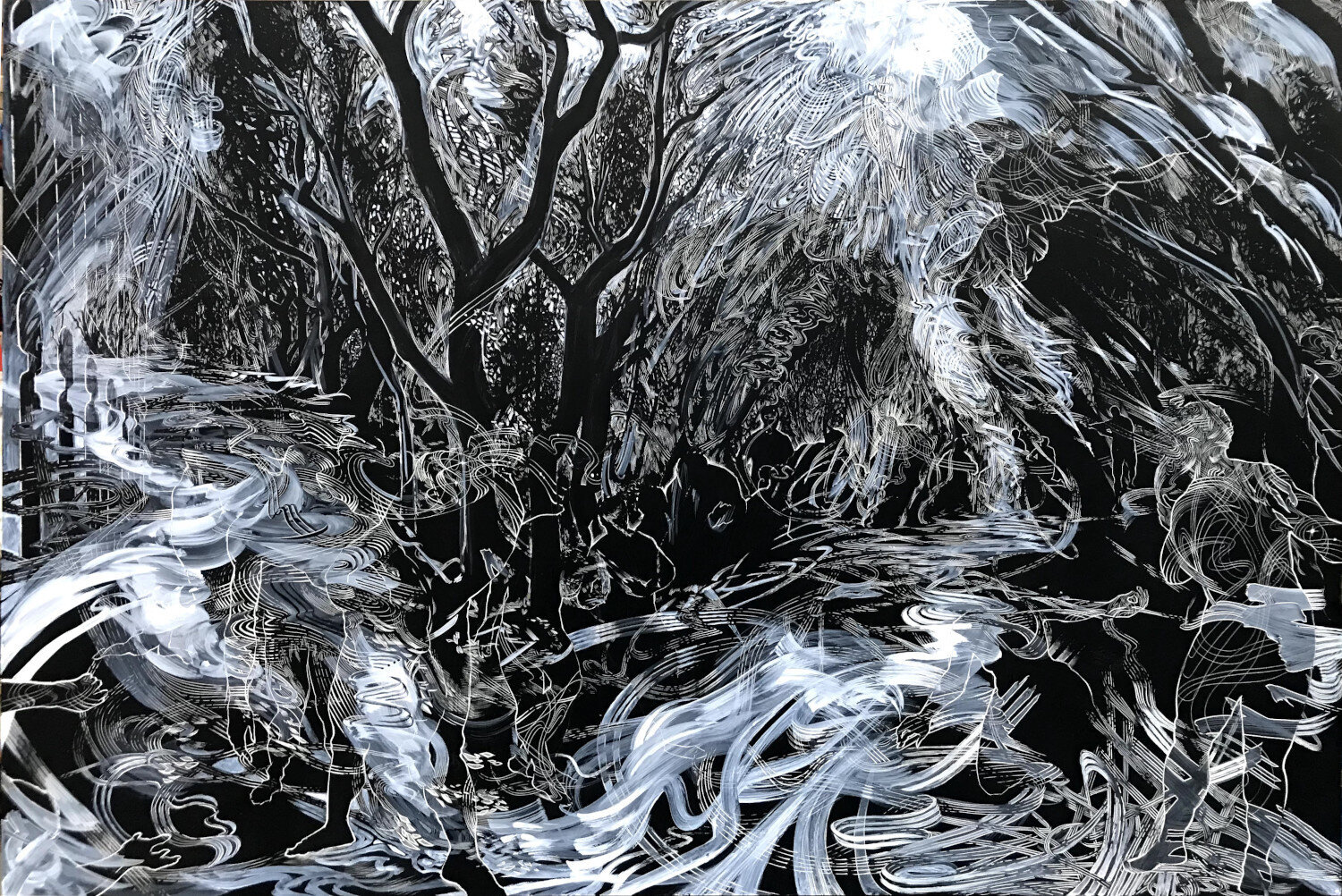
I begin the process of my pieces by exploring wooded areas in Boston and Chapel Hill, NC. Many of these locations have parallels to the vaulted ceiling found in Gothic Architecture. I first sketch out my ideas in rough ink pen drawing and then work digitally to combine the photographic imagery. A large part of the later process is improvised, using acrylic and India ink allows for extensive layering and adjustment.
Miller Opie
My work is directly related to 3+ years of surgeries I had several years ago. But it is also rooted in my love of nature and the organic objects I use. My practice is constant: I look for treasures wherever I am. I pick up feathers on the sidewalk in the city. I find shells on the beach. And I collect bones on hikes in the forest behind my studio. Friends also find and give me things to add to my trove.
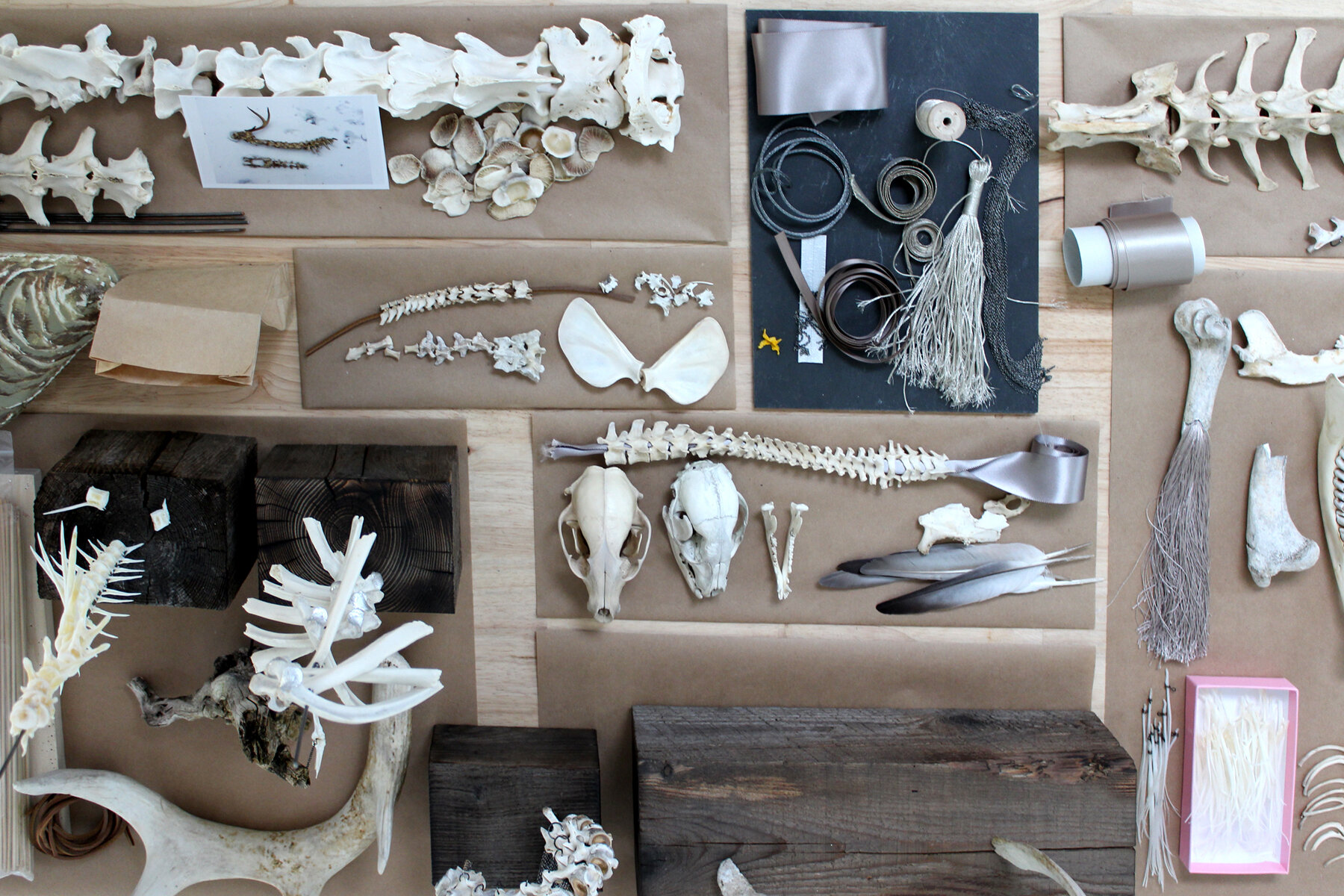

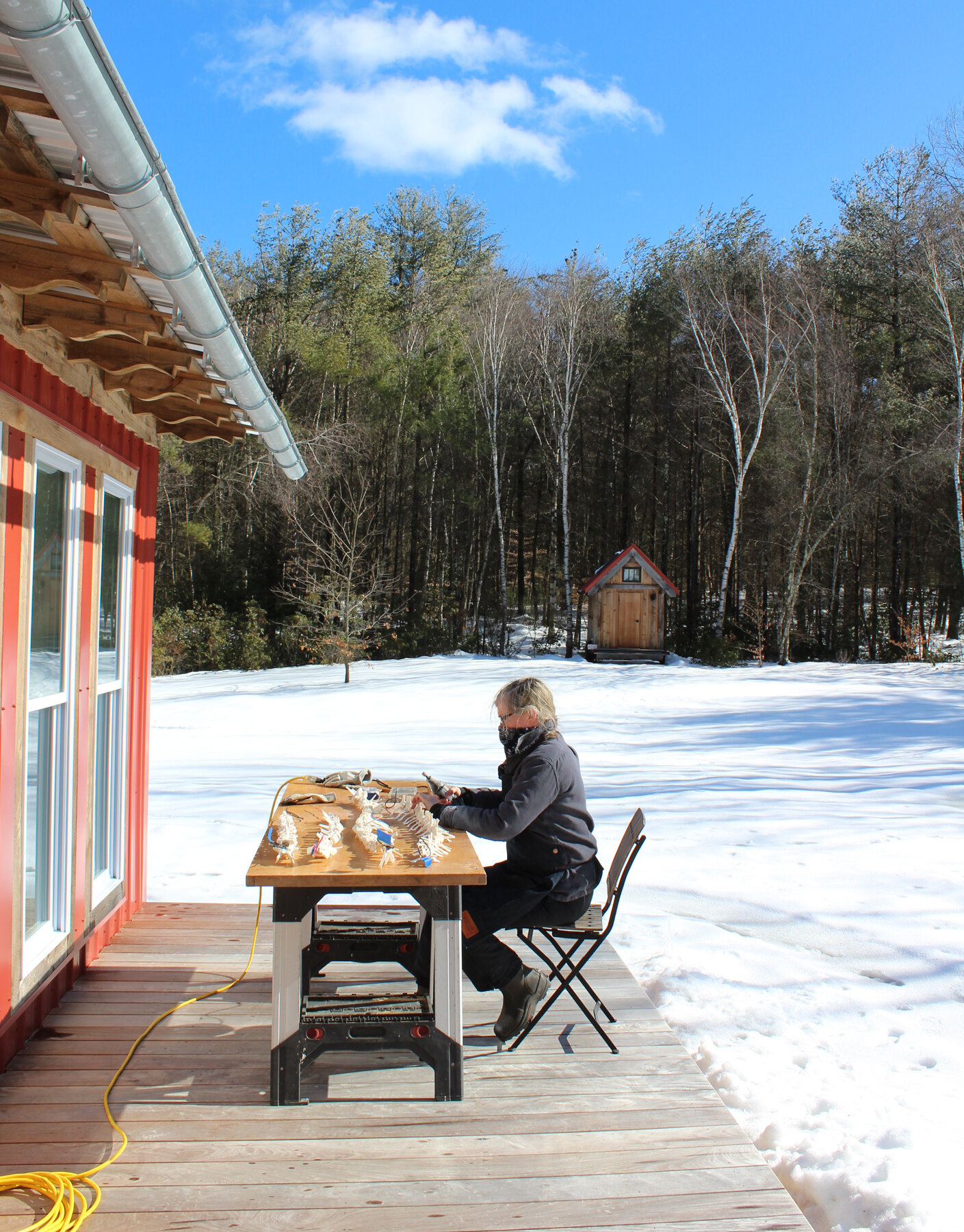
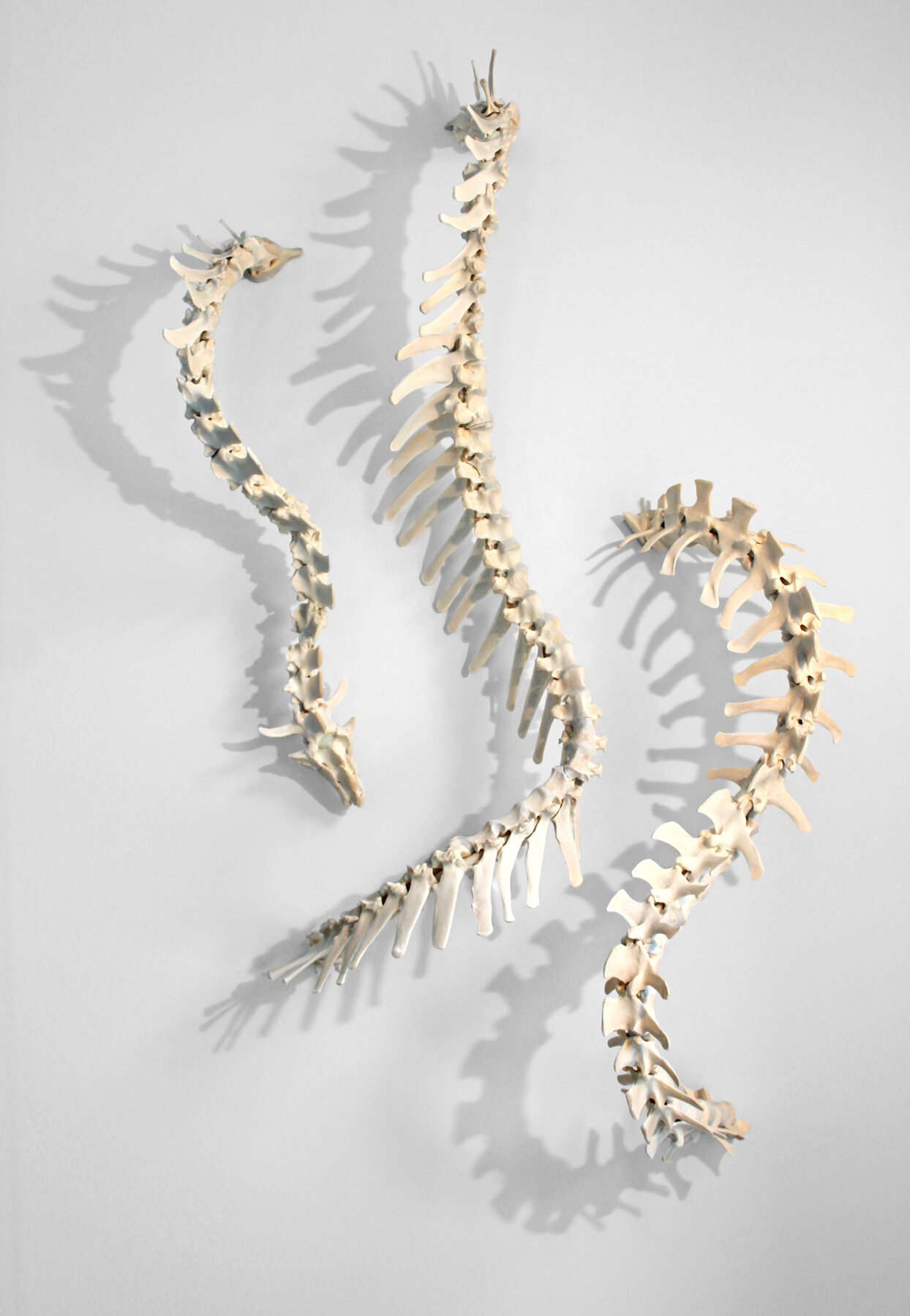
After I boil the bones outside to clean them thoroughly, I soak them in peroxide to bring out their creamy white color. I then constantly play with these prizes- combining them with wire, chain or sheet metal. I display my materials so I am able to see them at all times. This helps me think through combinations. While I’m not directly working on a project, I’ll walk by the shapes, move them around, move them back again until things make sense with the goal of creating something new and only slightly recognizable for what it used to be. I then carve the bones, manipulating them to fit together in a new way.
This process has allowed me to confront and attempt to accept my surgeries. By using my love of nature, I constantly investigate how beauty can be shaped through mortality and rejuvenation.
Dennis Stein
I have always been drawn to mundane and ordinary subjects, and attempt to give them visual strength. I walk around with a camera or two, and just photograph whatever catches my interest. I then sort through what I have and see what threads there are that run through them. Cameras are fun to use, especially older ones. I recently bought a 1936 Zeiss Ikon Ikoflex TLR for $ 60. It works great. Each film camera, each lens, each kind of film has their own personality, in a sense. So when I combine this camera with this lens and this film, I get a result that is different from another combination, which could be subtle or quite different. I have a few Holga toy cameras, one of which has a funky shutter. A Russian 35mm camera doesn’t always wind to the next frame properly, so I get overlapping negatives. I hand-hold a pinhole camera and make an exposure as I am walking. The resulting images can be totally unpredictable, happy accidents.
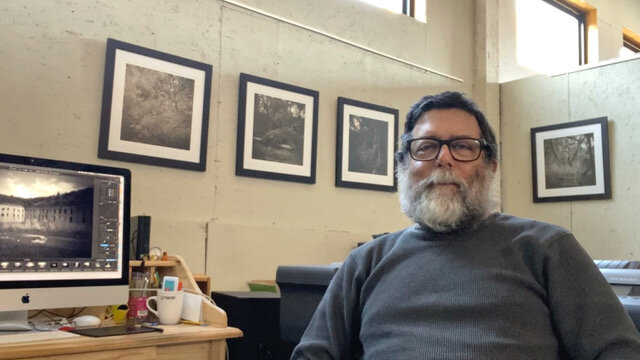
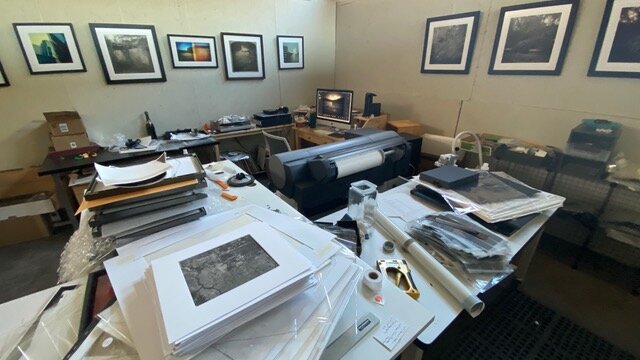
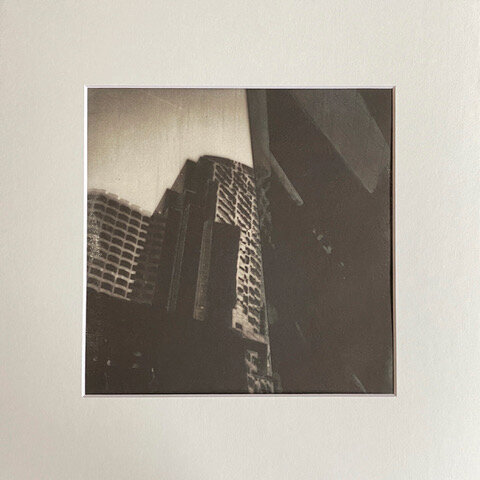
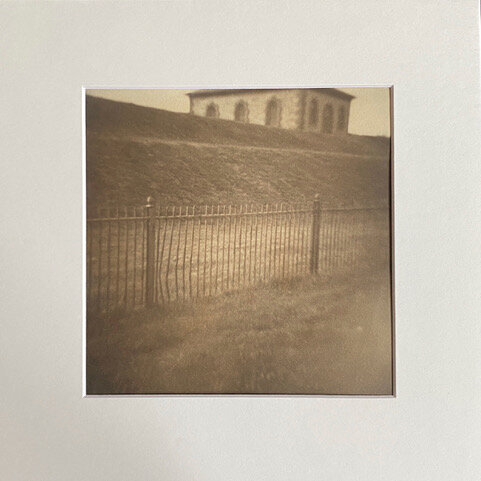
I love alternative processes. Over the past 3 years I have started to print cyanotypes, kallitypes, ziatypes, and salt prints. I take a digital file, usually from a film camera but sometimes from a digital camera or iPhone. I print an enlarged digital negative and use that for the alternative processes.Sometimes I think I overextend myself by using all types of cameras and various types of alternative processes, but the results are all different, and that’s what I like about it. It’s fun and challenging.
Cameras I use include 35mm; medium format, including TLR’s, folding cameras, toy cameras, and pinholes; and instant film, including cameras that use Polaroid and Fuji Instax. I do print digitally on a Canon wide format printer, as it allows me to print large images that I could not do otherwise. The paper I use now, for all my fine art, is Awagami Bamboo, which is made in Japan, and gives me the results I want in my images.

